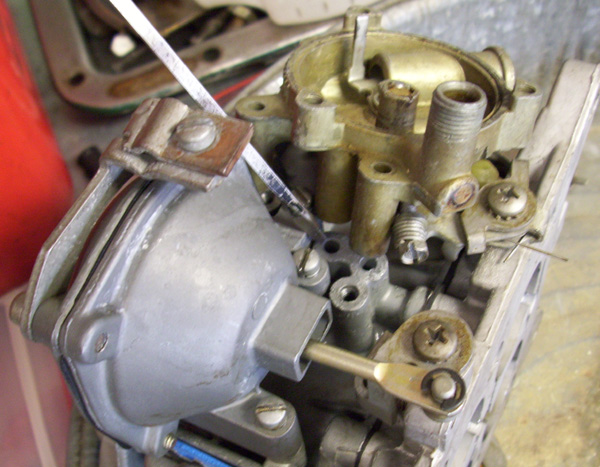Guys, trying to get a few things fine tuned. Right now, I'm running a Holley 4160, 600cfm with electric choke and vacuum secondaries.
My Setup
86 Silverado 4x4
SBC 355ci
700r4
3.42 rear gears
I'm running 12' initial advance with a total of 36 all in. I'm showing really close 16hg on the vacuum gauge at idle. The primary jets are 65s and the power valve is a 65 and according to the paperwork that came with it I have the plain secondary diaphragm spring.
Here's the deal, if I'm light on the throttle it runs normal in any gear. If I punch it to the floor from a dead stop it does fine in first gear but starts to bog in second and unless i back out of it. If I punch it in 2nd or 3rd I get a bog, but If I give it medium throttle I'm fine. My thought is that the secondaries are coming in to soon. By the way I have my air/fuel screws backed out 1.25 turns where i found the greatest stable vacuum reading.
Any thoughts? Also is there a way to stop the secondaries from opening all together so I could test my theory? Also, if I get a spring kit should I use a heavier spring? Oh, and is there a chance that these symptoms could be fixed with an adjustment to the accelerator pump?
My Setup
86 Silverado 4x4
SBC 355ci
700r4
3.42 rear gears
I'm running 12' initial advance with a total of 36 all in. I'm showing really close 16hg on the vacuum gauge at idle. The primary jets are 65s and the power valve is a 65 and according to the paperwork that came with it I have the plain secondary diaphragm spring.
Here's the deal, if I'm light on the throttle it runs normal in any gear. If I punch it to the floor from a dead stop it does fine in first gear but starts to bog in second and unless i back out of it. If I punch it in 2nd or 3rd I get a bog, but If I give it medium throttle I'm fine. My thought is that the secondaries are coming in to soon. By the way I have my air/fuel screws backed out 1.25 turns where i found the greatest stable vacuum reading.
Any thoughts? Also is there a way to stop the secondaries from opening all together so I could test my theory? Also, if I get a spring kit should I use a heavier spring? Oh, and is there a chance that these symptoms could be fixed with an adjustment to the accelerator pump?







